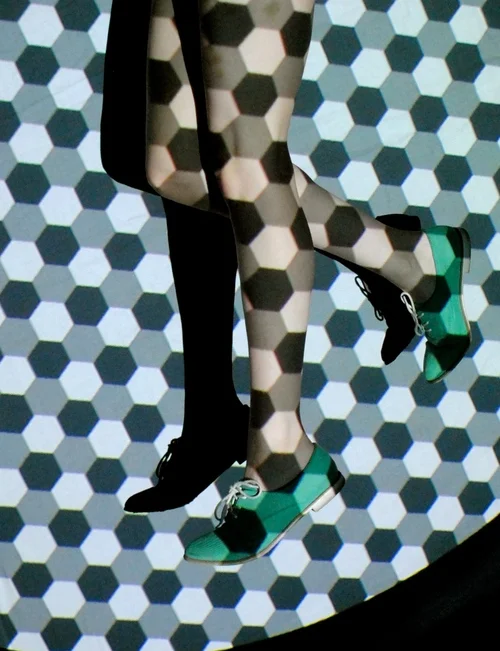Navigating the Land
How did you manage to navigate to the place you are sitting right now as you read this? If you are in a familiar place like your office or favorite café, how did you find your way there? If you are in a new place, how did you explore and navigate the new space? Did you bump along into walls and objects and change course accordingly like an iRobot Roomba vacuum cleaner? Hopefully, not.
The Making of Mental Maps
So how do we do it? How do we manage a new café with various dimensions, multi-levels, tables, chairs, people, walls, stairs, and other obstacle? We very quickly seem to become cartographers of the environment using multi-modal sensory information to create some sort of internal, mental map. But is there really a “mental map?”
In 1948, Edward Tolman proposed the concept of a “cognitive map.” In the late 1950’s the new technique of implanted micro wires into the brain allowed researchers to study free moving animals. In 1971, using this technique, John O’Keefe found the neural substrate of Tolman’s “cognitive map.” When a rat moved into a particular place in an environment, certain cells in the hippocampus (CA1) fired consistently. So when you pass the water station at your local café, certain place cells fire in the “water place.” However, these “water place” cells are not specifically “water place” cells in all environments since there may not always be a water place. Place cells can be active in different places and environments. They readjust to new places. O’Keefe referred to this as “remapping.”
Hexagons and Honeycombs
Fast forward our temporal place a few decades to the Moser group, May-Britt and Edvard Moser. They were looking to find where the hippocampus was receiving this place information. They set their sights on the entorhinal cortex, which is very close to the hippocampus. While poking and prodding in the rat brain, a particular firing pattern emerged when the animal was allowed to roam freely. A very specific, grid like pattern… What kind of configuration do you think this would take? What would be an efficient and encompassing layout to represent a space? Nature has her consistent patterns, and here deep in the brain we find one yet again.
Cells that fired consistently were observed at the vertices of equilateral triangles (i.e. the place where two lines of a triangle meet) resulting in a familiar pattern regardless of the direction or path the rat was taking. Those of you who are Euclidean fans or 3D designers already know how useful and fundamental equilateral triangles are for tessellating (i.e. tiling) a surface. What do you get when you look at all these vertices? What sort of pattern emerges?
Hexagons. Yes. That’s right. Your spatial grid in your brain is laid out like a bee’s honeycomb. So what makes this bee hive pattern in your brain so interesting? Unlike the place cells that reconfigure and “remap” in new environments to new landmarks (like the Roomba vacuum), grid cells retain their hexagonal layout, regardless of environmental changes. This has led scientists to infer this grid is not derived from the outside work but rather is something intrinsic in an organism, created within the brain. Our “mental/cognitive map” is an actual neural map.
Bridging the Laboratory and Clinical Research Gap: Human Data
This was such a landmark discovery, that in 2014 John O’Keefe, May-Britt Moser, and Edvard Moser were awarded the Nobel Prize in Physiology or Medicine. This has now placed place and grid cells on the popular neuroscience research map. In the past year alone, from the gracious participation of epilepsy patients with depth electrodes implanted in the entorhinal cortex, these grid cells have been observed in humans playing spatial navigation video games. (For those neuroscientists out there, you know how exciting and difficult it is to obtain human data.) The clinical population’s role in these routes of research will be paramount in the coming years, which, in addition to proving information about our neurological mapping systems, will also work towards bridging the gap between laboratory and clinical research.
So now when you get up from your favorite seat at the local café and effortlessly walk home, take a moment to acknowledge and appreciate the sophisticated mental, neural map Nature has endowed you with that your feet effortlessly. Follow the map… Beat a new path… Where does it lead? Hopefully to new questions and discoveries.
Happy navigating!
References:
Bjerknes, T.L., Moser, E.I. and Moser, M.B. (2014). Representation of geometric borders in the developing rat. Neuron, 82(1), 71-78.
Langston, R.F., Ainge, J.A., Couey, J.J., Canto, C.B., Bjerknes, T.L., Witter, M.P., Moser, E.I., and Moser, M.B. (2010). Development of the spatial representation system in the rat. Science 328, 1576-1580.
O'Keefe, J., and Dostrovsky, J. (1971). The hippocampus as a spatial map. Preliminary evidence from unit activity in the freely-moving rat. Brain research 34, 171-175.

